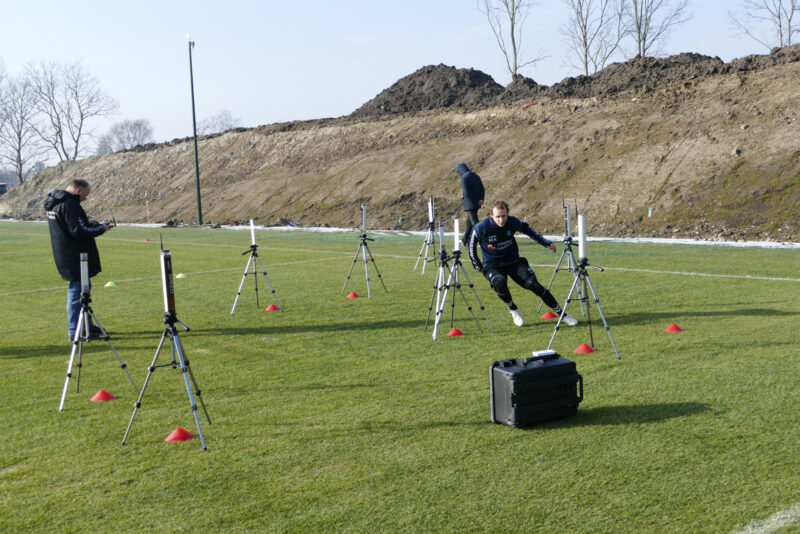Machine Vision: The Future of Player Tracking Systems with Hudl
The newly-released Hudl Pro Suite has been developed to capitalise on modern developments in video and optical tracking technologies to provide new data services to the professional sports market.
Player tracking systems were first introduced in football during the late 1990’s. They were based on optical tracking, which required specialised camera systems.
The latest technology allows these systems to compete with satellite or local positioning-enabled wearables (often referred to as GPS and LPS) as the tool of choice for generating positional and inertial data. Meaning they can quantify physical demands, automate video telestration, and provide tactical insights into team dynamics.
While wearables can provide supplementary data, such as inertial and heart rate data, there are several advantages to optical tracking technology. It's non-invasive, more reliable in stadium environments and can provide contextual data on both teams—a critical aspect when judging performance in a competitive environment.
Dr. Paul Neilson, Hudl’s former director of market development, explained how the Hudl Pro Suite was developed.
“It all started with us installing cameras for the tactical feeds within stadiums,” said Neilson. “Then we thought, now we have these cameras in stadiums, can we create a player tracking system which can integrate with our existing software solutions?"
“We will provide 25 coordinates every second on a player’s position, that’s for the whole game."
“Hudl’s research and development team worked on this new project for the best part of two years to build a player tracking system which utilises ‘machine vision’ and ‘machine learning’ to track any object within an image frame.
“Fundamentally, what our player tracking system gives you is a wide range of data points on both players and match officials,” adds Neilson. “We will provide 25 coordinates every second on a player’s position, that’s for the whole game.
“So if you multiply out 25 points of data per second in a game of football with 22 players across 95 minutes, you’re talking over 3 million data points. That’s what we can create for a game of football.”
Once this data has been collected, there are a number of uses which can benefit the team.
“For example, you can measure physical exertion in and out of possession, high intensity activity during transitions and the volume and type of accelerations and decelerations performed. In addition, positional data can now be used to identify and report deeper tactical insights on team dynamics, for example team shape, pressing, defensive balance, numerical dominance, player attraction and creating space.”
"You’re talking over 3 million data points. That’s what we can create for a game of football."
To test the consistency and accuracy of the data collection methods, Hudl conducted extensive and frequent internal testing. These included superimposing velocity and acceleration data onto match video to allow visual inspection and verification of the positional data and calculated data outputs.
“These visuals provided expert operators and engineering teams an effective method of inspecting positional data for obvious tracking issues,” concluded Neilson.
Initial field based data validation testing took place at Danish Superliga club Brondby IF. Learn more about this testing and Hudl’s continual investment in data validity and reliability.











